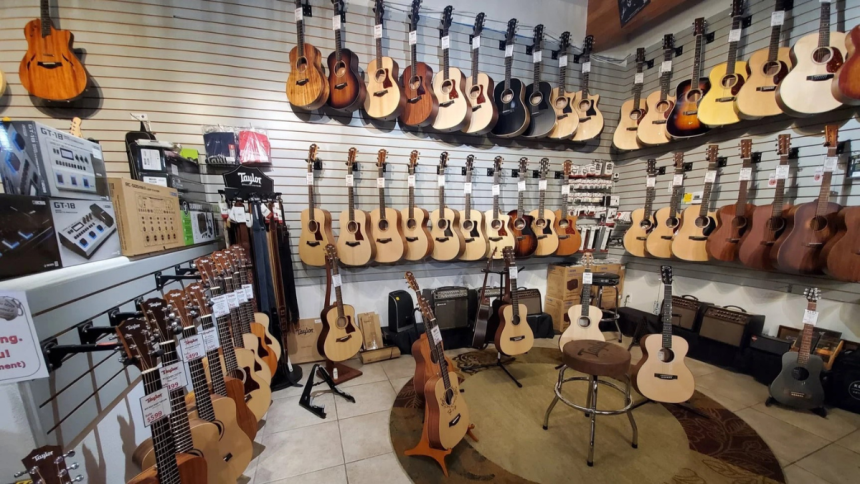There’s something deeply personal about holding a guitar that didn’t come off a factory line. It’s not just the custom neck shape or the wood grain you handpicked. It’s the fingerprints on the frets, the solder burns you earned while wiring up pickups, and the slightly-off finish that reminds you this thing wasn’t born in a warehouse. More players—seasoned pros and weekend hobbyists alike—are turning away from cookie-cutter guitars and picking up chisels, files, and soldering irons. They’re not trying to reinvent the wheel. They just want an instrument that speaks their language, built by their own hands.
The Pull Toward Something Tangible
Guitars aren’t just tools—they’re extensions of the player. That’s why building one hits different than buying one. Sure, you could walk into a shop and grab something that sounds fine and looks okay. But it’s still somebody else’s idea of what a guitar should be. When you build your own, you make decisions every step of the way. You choose the scale length, the radius, the wood, the electronics. The whole thing is tailored to how you play and what you love. And the process, while slower than swiping a credit card, has a grounding effect. It pulls you out of the hyper-curated digital mess we live in and drops you into something tactile. Something real.
It’s not just about ditching mass production, either. It’s about patience. There’s no algorithm to help you carve a neck or route a cavity. It’s all hand-eye coordination, muscle memory, and trial-and-error. That slow, analog rhythm might be the most refreshing part. You can’t fake your way through a build. You have to show up. Fully.
The Gear That Actually Matters
Here’s the truth: most players will never notice a micro difference between one factory setup and another. But the moment you start shaping your own body blank or fitting a neck pocket, you feel every grain of wood, every bevel. That physical connection doesn’t come standard with store-bought guitars. And when you’ve got the right gear in your workspace, it opens the door to a whole new relationship with your instrument.
That’s where guitar building tools earn their keep. They’re not just accessories—they’re your co-pilot. Whether you’re carving contours, aligning frets, or cutting bone nuts, quality tools don’t just make the process easier—they make it possible. And no, we’re not talking about rebranded hobby kits that fall apart mid-project. This is the kind of gear that holds up through hours of sanding, wiring, and finishing. The kind that earns a permanent place on your bench because you trust it. When the tools feel good in your hands, you stop dreading the steps that used to intimidate you. And that’s when the builds start to get interesting.
When You Stop Chasing and Start Creating
Ask anyone who’s finished their first guitar build what changed for them. You’ll hear the same thing in different words: they stopped chasing someone else’s idea of tone. It’s easy to fall into the endless loop of buying, tweaking, and reselling gear, thinking the next big purchase will unlock something. But once you’ve pieced together a body, wired your own pickups, and filed a nut that actually fits the way you play, the chase shifts.
Suddenly, you’re not just playing a guitar—you’re playing your guitar. That bond changes how you approach the instrument. There’s pride in the small flaws, the quirks, the way the tone control doesn’t quite behave like a stock circuit. That’s the beauty of it. You’re not aiming for perfection—you’re aiming for resonance. When it’s your hands that shaped the neck and your eyes that inspected the finish, you care differently. You play differently. And others hear it.
Even better, building teaches restraint. Instead of dropping hundreds chasing “vintage mojo,” you start learning what actually matters. Neck angle. Pickup height. String breaks over the saddle. Suddenly, you’re fixing problems that used to send you to a luthier or a Reddit forum. And when something goes wrong mid-gig or mid-session, you know exactly where to look.
Beyond Tone: Building as Therapy
There’s a quiet meditation to it. Sanding a body smooth, gluing a fretboard, winding your own pickups—it slows everything down. And that’s something we need more of. The world doesn’t exactly reward patience right now. But guitar building demands it. It demands focus. You can’t half-watch a video and also route a clean neck pocket. You have to commit.
For players who’ve spent years hunched over a screen, the act of building becomes a kind of recalibration. You’re working with wood, steel, bone. Real stuff. You’re solving problems with your hands, not software. It rewires your brain in the best way. No buzzwords, no branding—just the satisfying thud of a mallet and the smell of cut maple.
That kind of tactile creativity does something deeper than you’d expect. It burns through anxiety. It kills perfectionism. It gives you permission to mess up, start over, and learn in a way that feels rooted and personal. You’re not just making a guitar—you’re building the mindset that can handle mistakes, setbacks, and breakthroughs without throwing in the towel.
When You Finally Plug It In
There’s this moment. It comes after all the sanding dust has settled and the lacquer’s finally cured. After you’ve soldered the last ground wire and strung it up for the first time. You plug it in. You hit a chord. It hums. Not like anything you’ve played before—because this one carries all the hours you sank into it. It’s not cleaner or louder or flashier. But it’s yours. That first note hits differently not because of tonewood or boutique caps, but because you built it. And nothing else sounds like that.
Even your old bass guitar will feel a little less exciting after that.
There’s no need to romanticize it too much. Some builds are messy. Some don’t come out the way you hoped. But that’s part of the pull. Once you’ve tasted the process, even imperfectly, you’ll never look at a showroom wall the same way again. There’s just too much magic in the mistakes.
All Wired Up
Guitar building isn’t for everyone. But for the ones who feel the itch to try, the ones who aren’t satisfied with cookie-cutter options or factory gloss, it’s something that sticks. You’ll learn more from screwing up a fret job than from years of YouTube rabbit holes. And when it’s done—really done—you’ve got more than an instrument. You’ve got proof you can make something that sings, sweats, and survives. Something that didn’t exist until you gave it shape.
Lynn Martelli is an editor at Readability. She received her MFA in Creative Writing from Antioch University and has worked as an editor for over 10 years. Lynn has edited a wide variety of books, including fiction, non-fiction, memoirs, and more. In her free time, Lynn enjoys reading, writing, and spending time with her family and friends.















